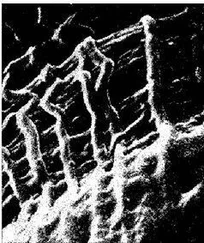Messier, C. and M. Gagnon. 2000. Glucose regulation and brain aging: Nutrition and cognitive decline. The Journal of Nutrition, Health and Aging 4:208–213.
Meyer, J. S. and L. F. Quenzer. 2004. Psychopharmacology: Drugs, the Brain and Behavior. Sunderland, MA: Sinauer Associates.
Miller, A. 2008. The methylation, neurotransmitter and antioxidant connections between folate and depression. Alternative Medicine Review 13(3):216–226.
Moll, J., F. Krueger, R. Zahn, M. Pardini, R. Oliveira-Souza and J. Grafman. 2006. Human fronto-mesolimbic networks guidedecisions about charitable donation. Proceedings of the National Academy of Sciences 103:15623–15628.
Monfils, M-H., K. K. Cowansage, E. Klann and J. LeDoux. 2002. Extinction-reconsolidation boundaries: Key to persistent attenuationof fear memories. Science 324:951–955.
Morris, M. C., D. A. Evans, C. C. Tangney, J. L. Bienias, R. S. Wilson,
N. T. Aggarwal and P. A. Scherr. 2005. Relation of the tocopherol forms to incident Alzheimer disease and to cognitivechange. American Journal of Clinical Nutrition 81:508–514.
Muller, S. F. Santorelli, F. Urbanowski, A. Harrington, K. Bonus and
J. F. Sheridan. 2003. Alterations in brain and immunefunction produced by mindfulness meditation. Psychosomatic Medicine 65:564–570.
Murray, R. K., D. K. Granner, P. A. Mayes and V. W. Rodwell. 2000. Harper’s Biochemistry , 25th ed. New York: McGraw-Hill.
Nanamoli, B. and B. Bodhi. 1995. The Middle Length Discourses of the Buddha: A Translation of the Majjhima Nikaya (Teachings of the Buddha). Boston: Wisdom Publications.
Niedenthal, P. 2007. Embodying emotion. Science 316:1002.
Nimchinsky, E., E. Gilissen, J. Allman, D. Perl, J. Erwin and P. Hof. 1999. A neuronal morphologic type unique to humans and great apes. Proceedings of the National Academy of Science 96:5268–5273.
Norenzayan, A. and A. F. Shariff. 2008. The origin and evolution ofreligious prosociality. Science 322:58–62.
Nowak, M. 2006. Five rules for the evolution of cooperation. Science 314:1560–1563.
Oberman, L. M. and V. S. Ramachandran. 2007. The simulatingsocial mind: The role of the mirror neuron system and simulationin the social and communicative deficits of autism spectrumdisorders. Psychology Bulletin 133:310–327.
O’Reilly, R. 2006. Biologically based computational models of highlevel cognition. Science 314:91–94.
Pare, D., D. R. Collins and J. G. Pelletier. 2002. Amygdala oscillationsand the consolidation of emotional memories. Trends in Cognitive Sciences 6:306–314.
Park, M., G. W. Ross, H. Petrovitch, L. R. White, K. H. Masaki,
J. S. Nelson, C. M. Tanner, J. D. Curb, P. L. Blanchette and R.
D. Abbott. 2005. Consumption of milk and calcium in midlife and the future risk of Parkinson disease. Neurology 64:1047–1051.
Paus, T. 2001. Primate anterior cingulate cortex: Where motor control, drive and cognition interface. Nature Reviews Neuroscience 2:417–424.
Pedata, F., L. Giovannelli, G. Spignoli, M. G. Giovannini and
G. Pepeu. 1985. Phosphatidylserine increases acetylcholinerelease from cortical slices in aged rats. Neurobiology of Aging 6:337–339.
Peeters, G. and J. Czapinski. 1990. Positive-negative asymmetry inevaluations: The distinction between affective and informational negativity effects. In European Review of Social Psychology: Volume 1 , edited by W. Stroebe and M. Hewstone. New York: Wiley.
Petrovic, P., R. Kalisch, T. Singer and R. J. Dolan. 2008. Oxytocin attenuates affective evaluations of conditioned faces andamygdala activity. Journal of Neuroscience 28:6607–6615.
Pitcher, D., L. Garrido, V. Walsh and B. C. Duchaine. 2008. Transcranial magnetic stimulation disrupts the perception andembodiment of facial expressions. The Journal of Neuroscience 28:8929–8933.
Posner, M. I. and M. K. Rothbart. 2000. Developing mechanisms of self-regulation. Development and Psychopathology 12:427–441.
Puri, B. K. 2006. High-resolution magnetic resonance imaging sincinterpolation-based subvoxel registration and semi-automatedquantitative lateral ventricular morphology employing thresholdcomputation and binary image creation in the study of fattyacid interventions in schizophrenia, depression, chronic fatigue syndrome and Huntington’s disease. International Review of Psychiatry 18:149–154.
Quirk, G. J., J. C. Repa and J. E. LeDoux. 1995. Fear conditionin genhances short-latency auditory responses of lateral amygdalaneurons: Parallel recordings in the freely behaving rat. Neuron 15:1029–1039.
Rabinovich, M., R. Huerta and G. Laurent. 2008. Transient dynamics for neural processing. Science 321:48–50.
Raichle, M. 2006. The brain’s dark energy. Science 314:1249–1250.
Raichle, M. and D. Gusnard. 2002. Appraising the brain’s energy-budget. Proceedings of the National Academy of Sciences 99:10237–10239.
Raichle, M. E., A. M. MacLeod, A. Z. Snyder, W. J. Powers, D. A. Gusnard and G. L. Shumlan. 2001. A default mode of brainfunction. Proceedings of the National Academy of Sciences 98:676–682.
Rasia-Filho, A., R. Londero and M. Achaval. 2000. Functional activitiesof the amygdala: An overview. Journal of Psychiatry and Neuroscience 25:14–23.
Rilling, J., D. Gutman, T. Zeh, G. Pagnoni, G. Berns and C. Kilts. 2002. A neural basis for social cooperation. Neuron 35:395–405.
Robinson, P. 2007. How to fill a synapse. Science 316:551–553.
Rosenberg, M. 2008 Second Edition. Nonviolent Communication: A Language of Life . Chicago: Puddledancer Press.
Sapolsky, R. M. 1998. Why Zebras Don’t Get Ulcers . New York: W. H. Freeman Co.
Schechner, S. 2008. Keeping love alive. Wall Street Journal , February 8, W1.
Schore, A. 2003. Affect Regulation and the Repair of the Self. New-York: W. W. Norton.
Seligman, M. 2006. Learned Optimism: How to Change Your Mind and Your Life . New York: Vintage/Random House.
Semaw, S., S. Renne, J. W. K. Harris, C. S. Feibel, R. L. Bernor,
N. Fesseha and K. Mowbray. 1997. 2.5-million-year-old stone tools from Gona, Ethiopia. Nature 385:333–336.
Shantideva. 1997. The Way of the Bodhisattva: A Translation of the-Bodhicharyavatara . Boston: Shambhala.
Shutt, K., A. MacLarnon, M. Heistermann and S. Semple. 2007.
Grooming in Barbary macaques: Better to give than to receive?
Biology Letters 3:231–233.
Siegel, D. J. 2001. The Developing Mind . New York: Guilford Press.
Silk, J. B. 2007. Social components of fitness in primate groups. Science 317:1347–1351.
Simpson, S. W., J. Quade, N. E. Levin, R. Butler, G. Dupont-Nivet,
M. Everett and S. Semaw. 2008. A female Homo erectus pelvis from Gona, Ethiopia. Science 322:1089–1092.
Singer, T. 2006. The neuronal basis and ontogeny of empathy and mind reading. Neuroscience and Biobehavioral Reviews 30:855–863.
Singer, T., B. Seymour, J. O’Doherty, H. Kaube, R. J. Dolan and
C. D. Frith. 2004. Empathy for pain involves the affective but not sensory components of pain. Science 303:1157–1162.
Singer, T., B. Seymour, J. O’Doherty, K. Stephan, R. Dolan and
C. Frith. 2006. Empathic neural responses are modulated by the perceived fairness of others. Nature 439:466–469.
Singh, M. 2005. Essential fatty acids, DHA and human brain. Indian Journal of Pediatrics 72:239–242.
Spagnoli, A., U. Lucca, G. Menasce, L. Bandera, G. Cizza, G. Forloni, M. Tettamanti, L. Frattura, P. Tiraboschi, M. Comelli, U. Senin, A. Longo, A. Petrini, G. Brambilla, A. Belloni, C. Negri,
Читать дальше
Конец ознакомительного отрывка
Купить книгу












